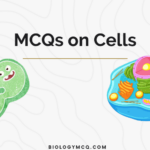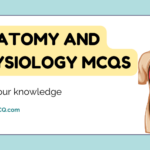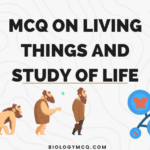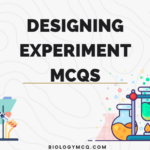Study and Learn with 1000s of Biology MCQs
Human Digestive System MCQs
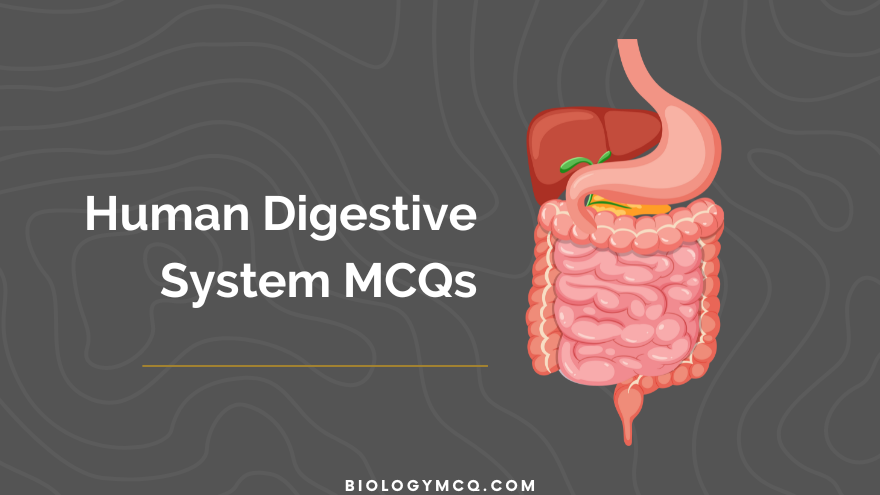
Human Digestive System MCQ – These multiple-choice questions on the human digestive system explores the anatomy, physiology, and functions of each digestive organ and the overall process of digestion.
Topics covered include digestion of carbohydrates, proteins, and fats, absorption of nutrients, regulation of digestion, and common digestive disorders.
Answering these MCQs will not only help you understand the structure and function of the human digestive system but also deepen your knowledge of nutrition and gastrointestinal health.
Ready to explore the intricate world of the human digestive system? Let’s Start
The act of chewing is technically called?
Metastasis
Meiosis
mitosis
mastication
mastication
_____ is the first step in food digestion for humans
Digestion
defecation
Mastication
None of these
Mastication
_____ is an enzyme found within saliva that splits apart the bonds between glucose molecules in a long chain of starch.
salivary lipase
salivary amylase
salivary ligase
salivary protease
salivary amylase
The human digestive system is a complex series of organs and glands responsible for the breakdown and absorption of nutrients from food and the elimination of waste products from the body.
It consists of the mouth, esophagus, stomach, small intestine, large intestine, liver, gallbladder, and pancreas, each playing a specific role in the digestion and absorption process.
The _____ is the tube that connects your mouth to your stomach.
alvoeli
esophagus
Nephron
Loop of henle
esophagus
The squeezing of food through a hollow muscular structure is called?
peristalsis
mitosis
metastasis
meiosis
peristalsis
When the swallowed food drops into your stomach, it’s referred to as a _____
bolus
Nephron
Loop of henle
None of these
bolus
Gastric juice contains _____ ?
Sulphuric acid
Nitric acid
Carbonic acid
Hydrochloric acid
Hydrochloric acid
When food particles reach your stomach, the organ churns them up, and the enzyme _ starts breaking down the food’s proteins into smaller chains of amino acids
Protease
ligase
pepsin
lipase
pepsin
_____ is known as the gate between your stomach and small intestine
pyloric valve
Bicuspid valve
Tricuspid valve
None of these
pyloric valve
When the lining of the stomach is eroded by digestive enzymes and stomach acid, the resulting condition is referred to as a _____
ulcer
cancer
Constipation
anaemia
ulcer
in _____ two Australian doctors, Barry Marshall and Robin Warren, detected a bacterium called Helicobacter pylori (or H. pylori) in the stomachs of people with ulcers
1934
1909
1890
1982
1982
in 1982, two _____ doctors, Barry Marshall and Robin Warren, detected a bacterium called Helicobacter pylori (or H. pylori) in the stomachs of people with ulcers
british
Australian
Dutch
french
Australian
in 1982, two australian doctors, _____ , detected a bacterium called Helicobacter pylori (or H. pylori) in the stomachs of people with ulcers
Schleiden and shwann
Watson and crick
Barry Marshall and Robin Warren
None of these
Barry Marshall and Robin Warren
in 1982, two australian doctors, Barry Marshall and Robin Warren, detected a bacterium called _____ in the stomachs of people with ulcers
Helicobacter pylori
Escherichia coli
Acinetobacter baumannii
Actinomyces israelii
Helicobacter pylori
in 1982, two australian doctors, Barry Marshall and Robin Warren, detected a bacterium called Helicobacter pylori in the stomachs of people with _____
cancer
ulcer
Diarrhoea
constipation
ulcer
_____ inflames the lining of the stomach, causing the organ’s protective mucus to disappear
Helicobacter pylori
Escherichia coli
Acinetobacter baumannii
Actinomyces israelii
Helicobacter pylori
Colour of bile is?
Red-brown
green-black
yellow-brown
red-black
yellow-brown
Bile is secreted by?
Liver
Stomach
lungs
Small intestine
Liver
pancreatic juice includes _____
Trypsin
chymotrypsin
Pancreatic amylase
Lipase
All of these
All of these
_____ breaks apart fat molecules into fatty acids and glycerol
Trypsin
chymotrypsin
Pancreatic amylase
Lipase
Lipase
Lipase breaks apart fat molecules into _____
Monosaccharides
Simple amino acids
fatty acids and glycerol
None of these
fatty acids and glycerol
_____ breaks long carbohydrates into disaccharides
Trypsin
chymotrypsin
Pancreatic amylase
Lipase
Pancreatic amylase
Pancreatic amylase breaks long carbohydrates into _____
disaccharides
Monosaccharides
Simple amino acids
fatty acids and glycero
disaccharides
_____ are enzymes that break apart peptide fragments
Pancreatic amylase
Trypsin and chymotrypsin
Lipase
None of these
Trypsin and chymotrypsin
Trypsin and chymotrypsin are enzymes that break apart _____
Fatty acids
disaccharides
peptide fragments
glycerol
peptide fragments
a type of trading system that allows cells to exchange nutrients and waste is called?
Capillary exchange
Arterial exchange
Venular exchange
None of these
Capillary exchange
_____ percent of a human’s body weight is from fluid
20
60
90
95
60
60 percent of a human’s body weight is from fluid. Of that 60 percent, _____ percent is extracellular fluid
4
10
20
45
20
Plasma is _____ percent in interstitial fluid
4
10
20
45
4
Extracellular fluid make up _____ percent of our body fluid
20
60
90
95
60
intracellular fluid make up _____ percent of our body fluid
40
60
90
95
40
60 percent of our body fluid is?
intracellular fluid
Extracellular fluid
Both of these
None of these
Extracellular fluid
40 percent of our body fluid is?
intracellular fluid
Extracellular fluid
Both of these
None of these
intracellular fluid
the products of fat digestion get coated with proteins and acquire a new name:_____
amylase
chylomicrons
Trypsin
chymotrypsin
chylomicrons
_____ are a classic example of an animal with an incomplete digestive tract
Jellyfish
Bat
earthworm
butterfly
Jellyfish
Animals that must “eat” constantly because they take food in and then push it out soon afterward are called _____ feeders
Discontinuous
partial
continuous
None of these
Continuous
Animals that are _____ consume larger meals and store the ingested food for later digestion.
Discontinuous feeders
Partial feeders
Continuous feeders
None of these
Discontinuous Feeders
discontinuous feeders must have a place in the body to store food as it slowly digests. In humans, this organ is the _____ .
Heart
stomach
lungs
liver
Stomach
